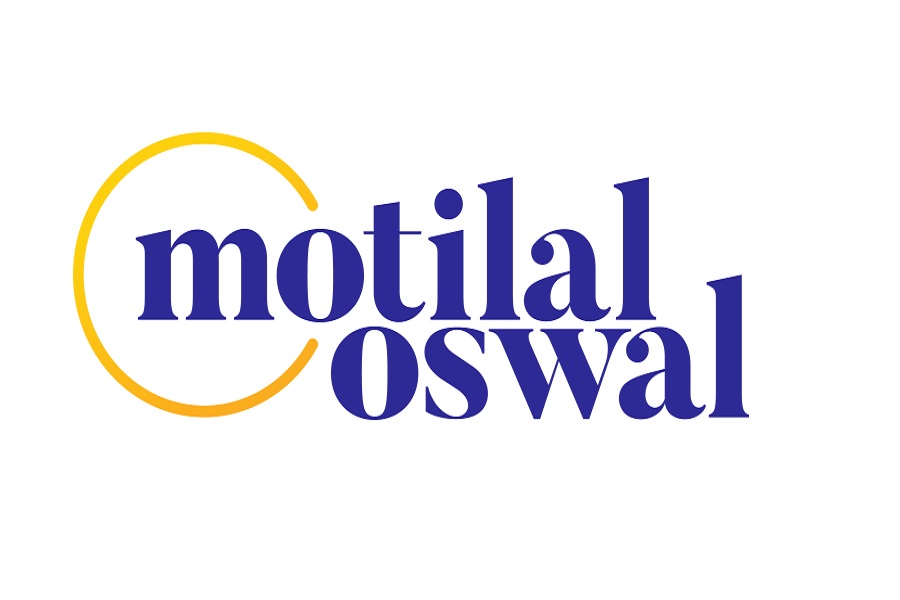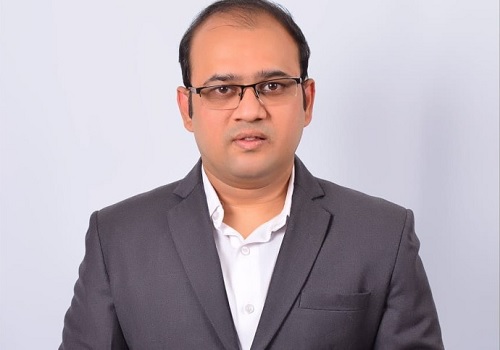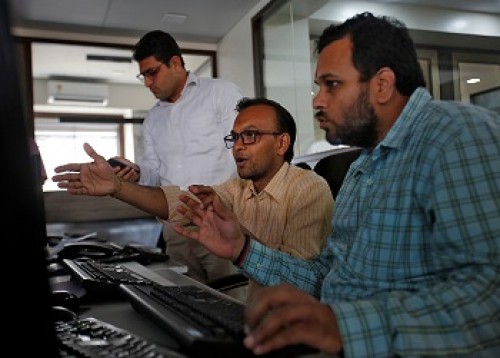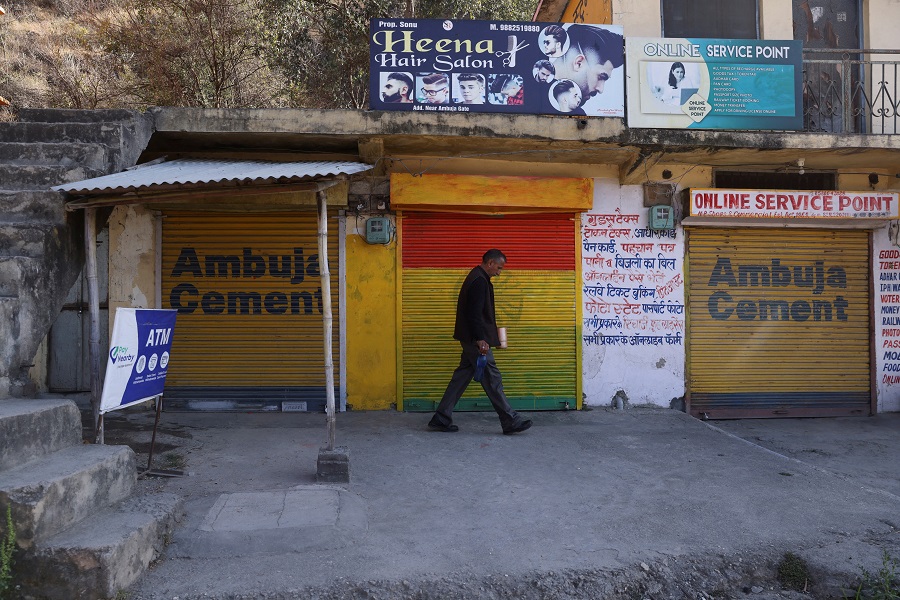Women's indispensable role in the handloom industry
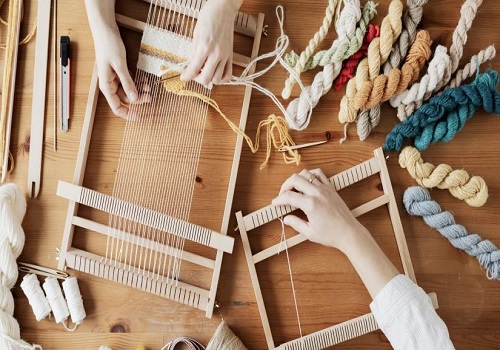
"Handloom weaving has emerged as a powerful catalyst for women's economic empowerment, especially in rural and marginalised communities in India. The long-standing traditions provide a dignified opportunity for women to improve not only their economic status but also contribute to their overall empowerment and social standing in their communities," says Shweta Rawat, chairperson and founder of The Hans Foundation.
In India, handloom weaving dates back to the 18th century. It provides a source of revenue as well as a means of empowering women. Even after so many decades, the handloom sector has left its mark on the global map, with India ranking as one of the world's main sources of handloom.
On the occasion of National Handloom Day, which is observed annually on August 7, IANSlife caught up with Shweta Rawat, Chairperson and Founder of The Hans Foundation - which has supported numerous large projects for livelihood, and education, from mid-day meals to computer training courses to the full adoption of schools. Rawat emphasises several aspects of handloom and the influence of handloom in India.
Read excerpt:
In what ways has handloom weaving become a catalyst for women's economic empowerment in various communities?
Rawat: Handloom weaving requires intricate skills and craftsmanship, which are traditionally passed down through generations. However, today many organisations are working to provide training in these skills, allowing many more women to attain expertise and become skilled artisans and at the same time revive diverse dying traditions across the country. Handloom weaving is an integral part of India's cultural heritage, and these newly trained women weavers and artisans will play a vital role in preserving this rich tradition by passing the traditions down to future generations.
Mastering the art of weaving translates into a stable income source. This financial independence not only elevates their economic status but also enhances their decision-making power within their households.
Thanks to various schemes and initiatives by the Indian government to support women handloom weavers, such as subsidies, financial assistance, and training programs, this is an ideal avenue for women to set up their own microenterprises and home-based businesses, within or without a cooperative structure.
Furthermore, the industry has also become a platform for women to showcase their creativity and entrepreneurial spirit. Many have ventured into designing and marketing their products, creating niche brands, and connecting with national and international markets. This exposure to business opportunities enhances their confidence and capacity to run successful enterprises.
What are the challenges faced by women who enter the handloom industry as entrepreneurs, and how can these challenges be addressed?
Rawat: Entering the handloom industry as an entrepreneur opens significant opportunities for women, but it also comes with challenges. Limited access to resources, market visibility, and balancing tradition with modern demands are some hurdles they face. Additionally, social norms and gender bias can discourage participation, while skill upgradation and innovation pose difficulties.
To empower women in this sector, targeted financial support, market linkages, and specialised training programs are essential. By addressing these challenges and implementing supportive measures, women entrepreneurs can thrive, fostering growth, sustainability, and gender equality in the handloom industry.
Can you highlight any specific measures or programs aimed at promoting gender equality and women's empowerment within the handloom industry?
Rawat: Women's indispensable role in the handloom industry, representing over 70 per cent of weavers and workers, is truly commendable. The Indian government's proactive measures through programs like the National Handloom Development Program (NHDP) and the Comprehensive Handloom Cluster Development Scheme (CHCDS) have significantly contributed to promoting gender equality and women's empowerment in this sector. Additionally, the Handloom Weavers' Comprehensive Welfare Scheme (HWCWS) by the Office of the Development Commissioner for Handlooms ensures social security and financial assistance for their children's education, further empowering women artisans.
Moreover, private philanthropies and not-for-profit organisations play a crucial role in providing skill development and addressing challenges faced by women weavers, such as market linkages. The Himadri Hans Handloom program, led by our foundation is one such initiative that is dedicated to supporting women's upliftment through targeted measures and programs.
Together, these efforts foster gender equality and empower women, leading to improved livelihoods and increased representation of women in leadership positions.
How can the handloom sector be linked with the global market to expand business opportunities for women weavers and entrepreneurs?
Rawat: Firstly, linking the handloom sector with the global market is essential for creating diverse business opportunities for women weavers and entrepreneurs. To achieve this, several strategies can be implemented.
Establishing a robust online presence through e-commerce platforms enables women weavers to showcase their products to a global audience while collaborating with established online marketplaces helps them reach customers worldwide. Additionally, organising export promotion events and trade fairs connects women weavers with potential international buyers and distributors, allowing them to build essential networks.
In addition to online platforms and promotion events, meeting international quality standards and obtaining relevant certifications enhances the credibility of handloom products in the global market. Support and training should be provided to help women weavers comply with these requirements. Market research and trend analysis are critical for understanding global consumer preferences, enabling women entrepreneurs to tailor their products to suit international tastes.
Furthermore, collaborating with international designers and partnering with global brands provides women weavers access to new markets and design ideas. Cultural exchange programs and residencies in other countries allow women weavers to learn from different cultures, adapt their skills, and gain exposure to international trends. Government incentives, financial support, export subsidies, and targeted training programs should be implemented to promote women-led handloom enterprises in the global market. Investing in attractive packaging and branding enhances the perceived value of handloom products, appealing to international buyers. Highlighting sustainable and ethical practices in handloom production attracts eco-conscious consumers globally.
By implementing these strategies, the handloom sector can effectively link with the global market, providing ample business opportunities for women weavers and entrepreneurs. Not only does this empower women economically, but it also contributes to the preservation of traditional crafts and cultural heritage on an international scale.
How has The Hans Foundation's Himadri Hans Handloom program contributed to preserving and promoting this timeless tradition?
Rawat: Our Himadri Hans Handloom (HHH) initiative has made a significant contribution to preserving and promoting the beautiful tradition of handloom weaving in Uttarakhand. Our diverse collections, including Panchachuli Pride, Almora, Nandadevi, and Harsil, are inspired by the rich cultural heritage and history of the region.
The Panchachuli Pride collection showcases pure pashminas, supporting local weavers and preserving the tradition of the Johari Sauka Bhotiyas - traditional Trans-Himalayan traders. Our Almora collection revives designs introduced by the British in the mid-nineteenth century, sustaining cottage industries and preserving Almora town's cultural heritage.
The ancient capital of Chand Rajas is known for its rich culture and traditions. The tweeds of Chand Rajas has, through the decades, been linked to the rich customs of Almora. Inspired by this, our “Almora Tweed” collection is made of hand-woven natural Merino wool fabric. The collection has plain and twill weave, with evergreen check, herringbone and houndstooth patterns.
Drawing inspiration from the legendary temple of Durga on Kasardevi hill, our Nandadevi collection captures the essence of the gentle hills and valleys of Almora District. Through this collection, we support skilled Himadri Hans Handloom artisans from 50 surrounding villages, showcasing the cultural richness and artistic prowess of the region.
Our Harsil collection, named after the village, known for its locally sourced sheep wool, celebrates the raw and nostalgic texture found in traditional hill products. By incorporating this unique element into shawls, textiles, and blends, we empower local artisans and celebrate the beauty of traditional craftsmanship.
Our foundation, we take immense pride in not only preserving the timeless tradition of handloom weaving but also in promoting the rich cultural heritage of Uttarakhand. We are dedicated to sustaining the beauty and significance of handloom weaving, contributing to the socio-economic development of the region, and fostering pride in the craftsmanship of the state. Our thoughtfully curated collections provide a platform for local artisans to showcase their skills and craftsmanship, ensuring that this invaluable tradition continues to thrive for generations to come.
How has empowering women in the handloom industry positively impacted the overall development of the communities in Uttarakhand?
Rawat: The Himadri-Hans Handloom (HHH) initiative, in partnership with the Government of Uttarakhand, has had a transformative impact on women in the handloom industry. Through skill upgradation programs in weaving, reeling, knitting, and embroidery, rural women artisans in Kumaon have experienced increased opportunities and financial independence.
To bolster livelihoods, HHH has established five decentralized clusters in and around Almora, promoting self-help groups and creating sustainable income opportunities. This strategic approach paves the way for future collaborations with the government and ensures long-term growth for the communities involved.
To enhance capabilities, HHH conducts skill training programs in collaboration with DIC and Weaver Service Center, equipping rural women artisans with the expertise to secure a steady income and improve prospects for their families.
Recognizing the importance of sustainability, HHH advocates for the use of natural fibers like nettle and wool, sourced from local self-help groups and departments in Uttarakhand. This emphasis on eco-friendly practices not only conserves the environment but also contributes to preserving traditional crafts.
Moreover, by collaborating with various agencies and being certified with trademarks and trade organizations, HHH works towards promoting sustainable, equitable, and participatory development, fostering social welfare, and ensuring efficient human resource management.
Through these efforts, the Himadri-Hans Handloom initiative demonstrates its commitment to empowering women, uplifting communities, and preserving the rich cultural heritage of Uttarakhand's handloom industry.
How does the commitment to environmentally friendly interventions enhance the program's impact and appeal to conscious consumers?
Rawat: The Himadri Hans Handloom program's focus on sustainability is evident in its Natural Fibers collection, which features a range of eco-friendly products like placemats, stoles, bags, fabrics, throws, and cushion covers. The use of nettle fiber extracted from dead plants during winter using traditional methods showcases the program's commitment to sourcing materials responsibly without harming the environment. Our weavers are also exploring bamboo fibers to create sustainable and delicate weaves for summer. This dedication to sustainability resonates with conscious consumers who prioritize eco-friendly and socially responsible products.
By promoting eco-friendly practices and showcasing the beauty and versatility of natural fibers, the Himadri Hans Handloom program not only enhances its impact on the environment but also appeals to a growing segment of conscious consumers seeking products that contribute positively to the planet and its communities. This dedication to sustainability not only supports local artisans and traditional crafts but also creates a lasting impression on consumers who value the preservation of culture, environment, and social well-being.
How does The Hans Foundation envision the future of the Himadri Hans Handloom program and its broader impact on the lives of women artisans and the handloom industry as a whole?
Rawat: We have been working with the women of Almora to revive local weaving traditions under the Himadri Hans Handlooms program for a few years now. Further training in skills like design, marketing, financial management, and enhancement of our artisans for true women-led development is very much the way forward. At the same, the future of the program also lies in both expanding our reach and taking the model to more locations and states as well as giving a new breath of life to rare and dying handicraft traditions.
As a foundation that also works significantly for Health interventions, our support to the communities of our women weavers also extends to ensuring that the health and well-being of the women and their communities are also comprehensively supported.
We also want to take the brand itself to new heights, so that each artisan’s work truly gains the recognition it merits. Technology is a great enabler with digital marketing, e-commerce platforms, and online marketplaces, all ways that will allow us to reach a global audience and enhance opportunities for women artisans. We are also working on increased linkages with B2B clients – both in India and abroad – for the same.
Additionally, we hope to keep working on continually making our processes greener and more sustainable, more focused on environmentally friendly practices, including using natural dyes, and organic fibers, and reducing waste in the production process.
As the program grows in scale and reach, we hope our program and operations bring economic empowerment to thousands of women across the communities that we work with as a foundation, serving as a catalyst for promoting better gender equity in their communities, and multi-dimensional reduction in poverty. As for the brand, we hope our work fosters a shift towards sustainable and eco-friendly fashion as well as cultural preservation of rare local traditions by bringing them forward to new and modern audiences.

